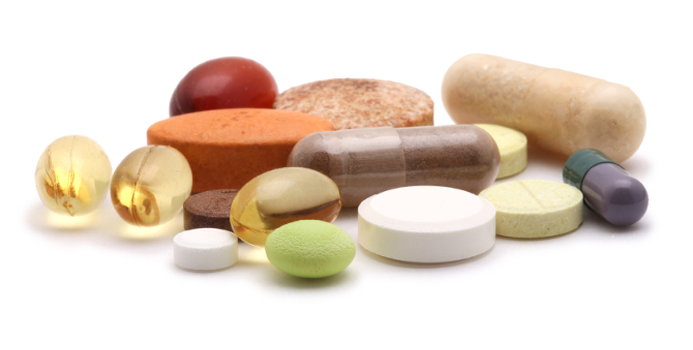For thousands of years discovering the secrets to a long life has been a primary goal for most of humanity. But sometimes figuring out if something is a help or a hindrance to longer life is complicated. Such is the case with vitamin E.
Cardiovascular Health
11 Amazing Health Benefits of Vitamin E
A vitamin enriched diet is extremely important for your well being. Vitamins possess a number of amazing benefits that keep you strong and active. With that being said, vitamin E and its properties are considered amongst the most remarkable.

Natural Source Vitamin E Market to Grow Due to Awareness About Healthy Lifestyle – Press Release
The easy accessibility of natural source vitamin E through an increasingly strengthening distribution network is additionally a key factor driving the market all over the world. Having successfully established a large consumer base through store-based retail channels, for example, supermarkets, health shops, hypermarkets, drugstores, mass merchandisers, and healthcare specialist retailers, the attention is currently on strengthening the e-commerce channel.
COLUMNISTS- Which oil is best for you?
What is your favourite oil: coconut oil, groundnut oil, sunflower oil, flaxseed oil, olive oil? Regarding its health benefits, none of these oils can compare with Palm oil. Surprised? You are probably astonished because palm oil is everywhere and is cheaper than other oils. Remember that biblical saying: ‘A prophet is always respected except in his own country.’ Palm oil is a native of West Africa.
What are the symptoms of low vitamin E?
The body needs vitamin E to function, making it an essential vitamin. It is fat-soluble, meaning that it requires fat from the diet to be properly absorbed. Vitamin E is mainly stored in the liver before being released into the blood stream for use.
Vitamin E Bioavailability Considerations for Maximized Health Benefits
Research has shown vitamin E’s health benefits to the brain, heart, bones; but, brands need to take notice of the form, as natural vitamin E imparts more health benefits.

The Three Great Eras of Vitamin E
Vitamin E products have evolved from a product based on alpha-tocopherol to complete formulas that are bio-enhanced, non-GMO and derived from vegetable oils.

Tocotrienol-rich fraction supplementation reduces hyperglycemia-induced skeletal muscle damage through regulation of insulin signaling and oxidative stress in type 2 diabetic mice
Lee H, Lim Y.
J Nutr Biochem. 2018 Mar 21;57:77-85. doi: 10.1016/j.jnutbio.2018.03.016. [Epub ahead of print]
Abstract
Chronic hyperglycemia induces impairment of muscle growth and development of diabetes mellitus (DM). Since skeletal muscle is the major site for disposal of ingested glucose, impaired glucose metabolism causes imbalance between protein synthesis and degradation which adversely affects physical mobility. In this study, we investigated the effect of tocotrienol-rich fraction (TRF) supplementation on skeletal muscle damage in diabetic mice. Diabetes was induced by a high-fat diet with streptozotocin (STZ) injection (100 mg/kg) in male C57BL/6J mice. After diabetes was induced (fasting blood glucose levels≥250 mg/dl), normal control (CON) and diabetic control (DMC) groups were administrated with olive oil, while TRF treatment groups were administrated with TRF (dissolved in olive oil) at low dose (100 mg/kg BW, LT) or high dose (300 mg/kg BW, HT) by oral gavage for 12 weeks. TRF supplementation ameliorated muscle atrophy, plasma insulin concentration and homeostatic model assessment estimated insulin resistance in diabetic mice. Moreover, TRF treatment up-regulated IRS-1 and Akt levels accompanied by increased translocation of GLUT4. Furthermore, TRF increased mitochondrial biogenesis by activating SIRT1, SIRT3 and AMPK in diabetic skeletal muscle. These changes were in part mechanistically explained by reduced levels of skeletal muscle proteins related to oxidative stress (4-hydroxynonenal, protein carbonyls, Nrf2 and HO-1), inflammation (NFkB, MCP-1, IL-6 and TNF-α), and apoptosis (Bax, Bcl₂ and caspase-3) in diabetic mice. Taken together, these results suggest that TRF might be useful as a beneficial nutraceutical to prevent skeletal muscle atrophy associated with diabetes by regulating insulin signaling via AMPK/SIRT1/PGC1α pathways in type 2 diabetic mice.
The Difference Between Tocopherol and Tocotrienol
Tocopherol is one of the 2 members of the vitamin E family. The other member is known as tocotrienol. Vitamin E incorporates 8 different compounds. These include 4 tocopherols (alpha, beta, gamma and delta) and 4 tocotrienols (alpha, beta, gamma and delta). Both of them require fat in the diet in order to be absorbed and distributed within the body. Although it may seem like the two members are similar, various differences exist between them as outlined below.

An E-xcellent local oil – The Star
They are a source of energy and nutrients for our bodies, as well as antioxidants that protect our cells against the effects of free radicals and help to reduce inflammation. These are the good oils that should form a small but essential part of our daily diet. While there are many types of oils out there, an excellent one in our very own backyard is palm oil, which contains a high level of vitamin E.

